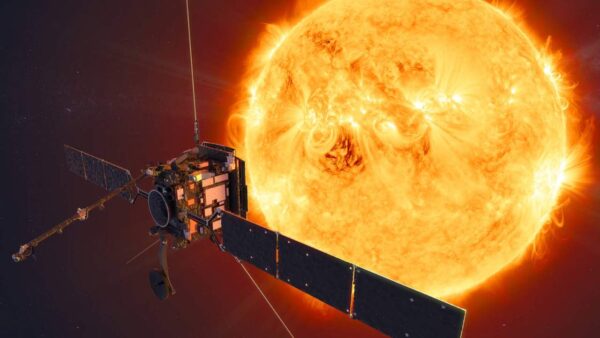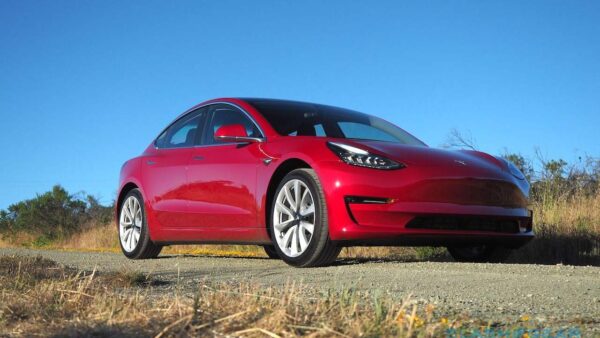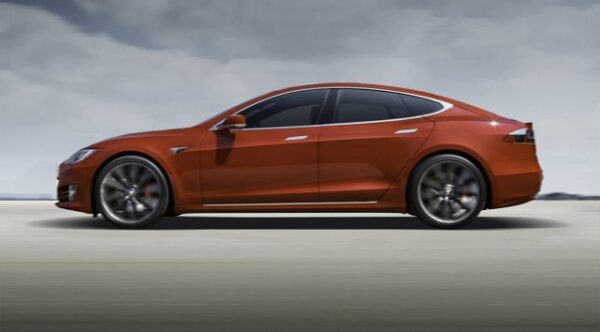The Biden Administration needs 500,000 EV chargers across the united states, and the White House is describing the way which will roll out — and also a number of the new technologies it is counting on to create zero-emissions transport more viable. The charger target was declared in March 2021, together with President Biden’s $2 trillion infrastructure program earmarking $174 billion to the EV transition.
Crucial into the charger growth will probably be tapping not just that infrastructure program, but present financing from the Department of Transportation, amongst others. A new report printed now concentrates on how existing DOT programs may also be utilized for EV chargers, and in the process help unlock components of nearly $42 billion longer.
Most important is the National Highway Performance Program (NHPP), that has $23.1 billion in 2021. This may be used for building and installation of EV charging infrastructure, such as parking facilities and utilities, the DOT points out, along with workforce training and development in areas associated with EV infrastructure, and really EV charging facilities for transit capital projects. In the same way, the $10.2 billion Surface Transport Block Grant Program (STBG) and $2.4 billion Congestion Mitigation & Air Quality Improvement Program (CMAQ) may also be utilised in exactly the very same ways.
https://cdn.slashgear.com/wp-content/uploads/2021/04/DOT_map.jpg
In general, the DOT states there are fifteen applications that might assist with EV infrastructure. The majority include capital that could directly be invested on EV charging facilities, in reality. On the other hand, the US authorities can also be searching for developments in electrical car charging technician.
Over in the Department of Energy, you will find 3 new research funding opportunities. The DOE has put aside $10 million to develop and research ways to reduce the price of DC fast chargers, on the premise that the US will require a greater volume of that hardware throughout the 2030 drive to half a thousand people charging places.
There is also $20 million in research funds for methods to hasten the adoption of commercially-available plug in electric vehicles, together with community-based public-private partnerships for technology around not just electric automobiles, however buses, school buses, and trucks.
Eventually, $4 million has been allotted”to promote strong partnerships and new plans to boost workplace charging regionally or nationwide which will greatly raise the feasibility of PEV possession for customers in underserved communities (e.g., demographics which now have minimum access to residence charging).”
Crucial into the transition, naturally, is providing not just green electricity, but stable electricity. Since the Texas outages exhibited with grim potency earlier this season, substantial chunks of the present grid can not actually manage current demand for power, never mind that a dramatic uptick in EV charging. The DOE and the Electric Power Research Institute (EPRI) strategy to develop a nationwide EV charging technical routine that will contain not just provisions for rapid charging but grid interaction also.
https://cdn.slashgear.com/wp-content/uploads/2021/04/map.jpg
The Department of Transportation is not waiting for this to be finished prior to it pushes forward with fresh chargers, nevertheless. The fifth round of”Option Fuel Corridors” was supported by the DOT now, construction on four rounds of specified interstates, highways, and country roads which are outfitted with other fuel supplies, such as EV chargers.
“The first four rounds of designations included portions of 119 Interstates and 100 US highways and state roads,” the White House said today. “Round 5 includes nominations from 25 states for 51 interstates and 50 US highways and state roads.”












![Have you been encountering the [pii_email_2c5d108980d117c8ca52] error while trying to send or receive emails using your Outlook account, you’re not alone. It’s a standard Outlook error that sometimes gets triggered thanks to network connectivity issues. However, several other factors also can cause you to run into the said error. The good news is that you simply can troubleshoot this error by yourself. during this guide, we are getting to mention various factors that cause the PII error and what methods you'll utilize to repair it. So, with none further ado, let’s start . What Causes the [pii_email_2c5d108980d117c8ca52] Error in MS Outlook In general, the error occurs when MS Outlook fails to determine a secure reference to the e-mail server. But, as we mentioned earlier, there are many other reasons which will trigger this error also . a number of these reasons include: Your device isn't connected to a lively Internet connection Your Outlook profile has been damaged thanks to external factors There are incorrect antivirus configurations on your PC FIles on your POP3 server are damaged How to Fix [pii_email_2c5d108980d117c8ca52] Error So, now that you simply know what triggers the [pii_email_2c5d108980d117c8ca52] error in Outlook, let’s take a glance at the solutions that’ll assist you fix it. Also examine the way to fix outlook [pii_email_316cb5e2e59f1ce78052] error Check Your Internet Connection Since a poor network connection is that the primary explanation for the error, start by checking your Internet connection. confirm that your device has active Internet connectivity. you'll try accessing other online services to ascertain if the web is functioning or not. Change Antivirus Configurations If you've got recently installed an Antivirus program on your PC, it'd be configured to automatically scan emails. If that’s the case, the Antivirus will restrict the Outlook app from functioning properly. So, confirm to vary the Antivirus Configurations by disabling the “Email Scanning” feature. Reinstall/Update Outlook Reinstalling or updating Outlook to the newest version is yet one more effective thanks to fix the [pii_email_2c5d108980d117c8ca52] error. When you’ll reinstall the app, all the damaged temporary files are going to be deleted and therefore the root of the matter are going to be eliminated also . Clear Unnecessary Emails from Outlook Folder If your primary inbox has too many unnecessary emails, they’ll cause bandwidth issues. this is often the rationale it’s always advised to clear the unnecessary emails from your Outlook folders. While you’re at it, confirm to clear the Trash also . this may help your Outlook app to deliver optimal performance. Conclusion So, if you’ve been encountering the [pii_email_2c5d108980d117c8ca52] error for a short time now, the above-mentioned will assist you fix the matter . Follow these tricks and access your Outlook account with none hassle.](https://tomtomworks.com/wp-content/uploads/2021/09/How-to-fix-outlook-pii_email_2c5d108980d117c8ca52-er-200x200.webp)

![How To Fix [pii_email_71e6bcfa8a2bee2aa151] Erro](https://tomtomworks.com/wp-content/uploads/2021/09/How-To-Fix-pii_email_71e6bcfa8a2bee2aa151-Erro-200x200.jpg)




